
Memories Of Summer
October 15th, 2009
I love autumn. I've loved it since I was a kid. The crisp air, the changing trees, gold and scarlet maple leaves piling up on forest paths. Still, I felt nostalgic looking through these photos I took in early August. Nowadays even the asters are going to seed, and alas, there is no such thing as a winter-blooming wildflower.

Black-Eyed Susan

Common Milkweed

1680x1050 wallpaper
I call it "cormorant on jade." No digital editing, other than a slight contrast enhancement, nor is the location anything exotic. The Rideau River was just a neat color that day.
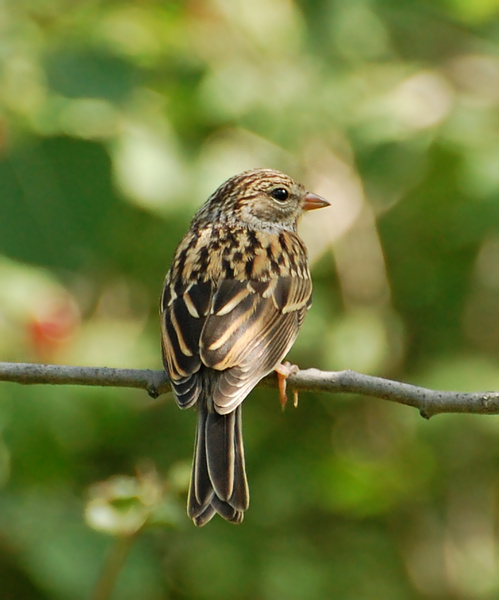
Sparrows are always tough to identify, and doubly tough in late summer when the fledglings come out. My best guess on this one is a young Chipping Sparrow.

St. John's Wort (center) and Viper's Bugloss (upper left.)
Fresh autumn Wood Ducks
October 12th, 2009
The pair of Wood Ducks stood out like delicate Fabergé eggs amidst the large, aggressive mallards.

1680x1050 wallpaper
(Male near center, female on the far left.)

That one was taken just after a large pile of birdseed hit the ground--thus the rather purposeful look of the approaching mallards.


There is in all the world no work of art like nature's work of art: a male Wood Duck in his fresh, newly-grown autumn plumage.
Fall Migration, mid-October 2009
October 11th, 2009
Warbler migration has finally wound down. There will be a trickle for awhile yet, especially of the abundant Yellow-Rumped Warblers, but I didn't spot a single one today. Taking their places are increasingly large flocks of kinglets, juncos, and White-Throated Sparrows.
This brings me full circle. It was kinglet season last fall when I first bought my zoom lens and started photographing birds.

Thanks to the cold weather today, the tiny, hyperactive Golden-Crowned Kinglets were only moving at light speed as opposed to, say, ludicrous speed. This contributed to my obtaining my first decent, in-focus photograph of the species!

A male Ruby-Crowned Kinglet. That red bit is not a trick of the light--it is, in fact, a wee glimpse of the bird's usually-concealed red crown patch.
Miscellaneous
October 8th, 2009
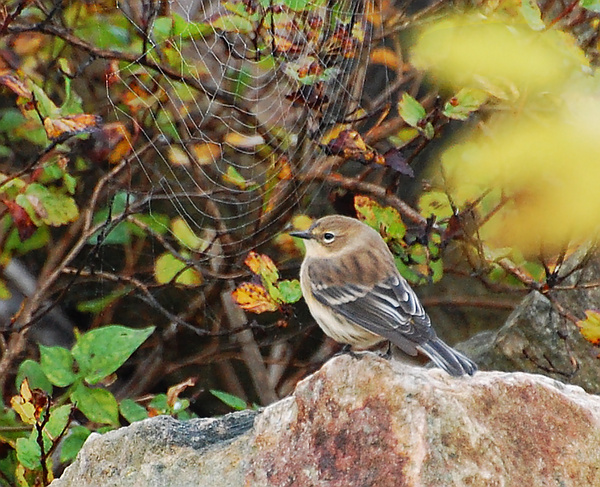
A slightly late migrant warbler--probably Yellow-Rumped. I wondered what attracted an insectivorous bird to the rocks at Andrew Haydon Park. When I studied this picture at home, I discovered the answer :-)
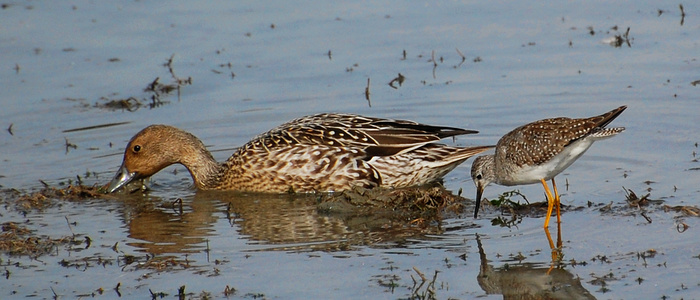
A female Northern Pintail and a Lesser Yellowlegs forage in shallow water at AHP. These two hung together for awhile, for whatever reason. Maybe they just liked each others' company.
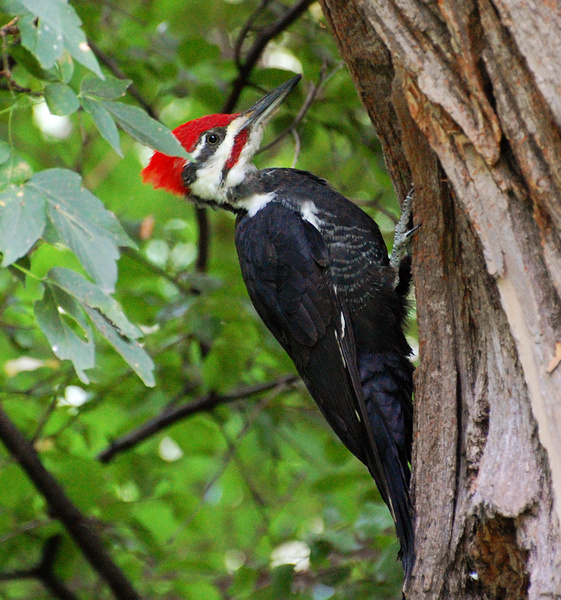
Male Pileated Woodpecker, photographed by the Rideau River in late August.
Misty Morning
October 7th, 2009

1680x1050 wallpaper
A red squirrel adds a welcome splash of color to a foggy morning at Andrew Haydon Park.
Great Blues
October 5th, 2009
Great Blue Heron shots taken in July, August, and October, respectively.

1680x1050 wallpaper

1680x1050 wallpaper

The cute, we brings it!
October 4th, 2009
...and lord, this place needs it.


Killdeer
- Bring in the cute. They are adorable birds with a habit of showing up in
the ugliest of surroundings!
- Are named for their song, which sounds like "kill-dee-ah."
- Frequent Andrew Haydon Park in fall migration, provided the river is low
enough. (That's where I photographed the above pair.) Killdeer are a type of
shorebird, and like most shorebirds, they love mud.
- Have precocious downy chicks who can walk and feed themselves soon after
hatching, and who really, really bring
in the cute.
- Are highly adaptable and comfortable in human-altered habitats. Where I
come from in the southern states, it's not at all uncommon in summer to find
killdeer and their downy young scurrying along the edges of parking lots and
on commercial lawns. Here in Ottawa they are a little more finicky, sticking
mostly to farmland in the breeding season and mud flats in the fall.
- Are sneaky:
"You sometimes see an adult killdeer in gravel, such as along a rocky railroad easement, or on a dirt road. As you approach, the killdeer may suddenly develop a broken wing. It struggles in front of you, as if it can barely walk, let alone fly. One or both wings drag pitifully on the ground.
If your instinct to rescue the killdeer overcomes you, and you try to catch the bird, it almost lets you reach out and pick it up. But somehow, while struggling to keep its balance, the killdeer manages to stay one step ahead of you. As you pursue it, the killdeer leads you farther and farther away from its four downy killdeer babies crouching on the ground or half hidden under a tiny bush.
When the killdeer feels that the young are safe from you, its broken wing heals suddenly, and the bird flies away, calling a loud "KILL-DEE" that sounds like a jeer."
- http://www.birdwatching.com/stories/killdeer.html - Are some of my favorite birds.
Lesser Yellowlegs
October 3rd, 2009
Andrew Haydon Park, October 2nd.




"Who is that strange lady, and why is she following me around?"
Poise
October 1st, 2009
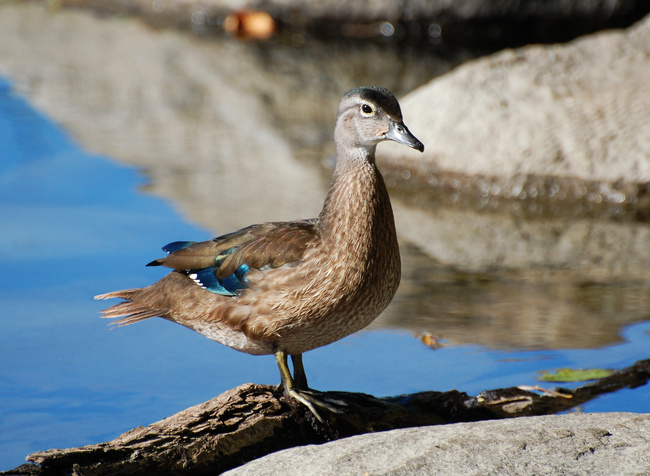
Juvenile Wood Duck, on the Rideau a few weeks ago.
It was a brisk morning at Andrew Haydon Park yesterday, with cold temperatures, strong winds and an occasional dousing of rain. I found it invigorating--at least until I'd been out in it for four hours, after which, I was pretty much done! The water level on the Ottawa River has finally gone down substantially, exposing habitat (i.e. mud flats) for sandpipers and plovers. Killdeer were foraging in the mud at the west end of the park, along with several Spotted Sandpipers and a pair of Lesser Yellowlegs. The usually Mallards in that area were joined by a small group of Blue-Winged Teal, and one male Gadwall. I can count on one hand the number of times I've seen Gadwalls, and I love their silvery plumage, so that was exciting.
The Brant has been at the park all summer and now into fall. I'm beginning to wonder when and if he'll leave. Ottawa winter would be hard on him.
Around midday another birder game along, toting scope and binoculars. I asked for his help to confirm (or correct) my ID on the Lesser Yellowlegs, he did, and we introduced ourselves and got to chatting. He had glimpsed an unusual songbird he couldn't identify back at Dick Bell Park, walking on the rocks. The bird flushed, but he figured now that he'd been gone awhile, it might be back. So we headed over there to search for it. (Dick Bell Park is a.k.a. Nepean Sailing Club and is within walking distance west of Andrew Haydon. It's known to birders primarily as A. home to a thriving Purple Martin colony, B. a place where you might see a Purple Sandpiper in early November, and C. a place where you might see an ultra-rare Northern Wheatear, if fate smiles on you.)
We finally found a Horned Lark, of all things! He was out on the jetty flitting among the rocks like a sandpiper, and occasionally walking on the lawn. Horned Larks are birds of open country (and because I have little experience birding open country, I'd never seen one before), so I was surprised to find him there--I'm pretty sure there is no "D. place for seeing horned larks" in anyone's book! Earlier that day I had seen a small bird with undulating flight over the river, likely the same one. We suspected that he was in mid-migration, the strong winds that morning grounded him, and he just dropped down to the nearest land he could find.
On Friday morning I go back with my camera, and hope to have the kind of luck I did today.
American Wigeon
September 29th, 2009

I photographed this male American Wigeon weekend before last at Mud Lake. He gradually grew accustomed to my presence as I knelt quietly on a platform over the lake, and wended his way closer and closer as he foraged. It was especially nice when he swan into an area where nascent fall colors were reflected on the water.

When he comes out of eclipse later in fall, that vague blackish patch on his face will turn iridescent green.
|
